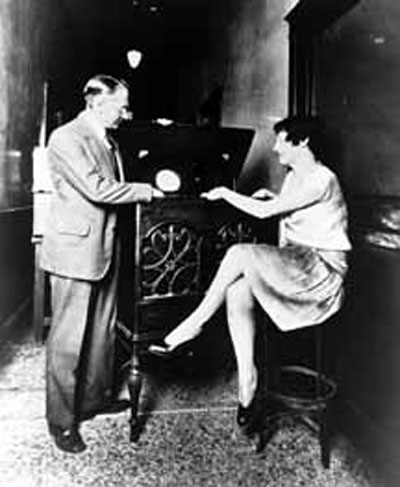
 |
Search | FAQ | US Titles | UK Titles | Memories | VaporWare | Digest | |||||||
| GuestBook | Classified | Chat | Products | Featured | Technical | Museum | ||||||||
| Downloads | Production | Fanfares | Music | Misc | Related | Contact | ||||||||
| CED in the History of Media Technology | ||||||||||||||

In the 1920's Russian immigrant Vladimir Kosmo Zworykin patented two inventions. The first was the Iconoscope, which essentially was a rudimentary video camera, and the second was the kinescope, precursor to the modern television tube. Zworykin was working for Westinghouse at the time, and when RCA broke away from Westinghouse and GE, he went to work for RCA with the encouragement of its leader David Sarnoff. During the 1930's Zworykin continued to develop the Kinescope, and it evolved into the tubes used in RCA's first commercial TV's shown at the 1939 World's Fair.
But sole credit for electronic television cannot go to Zworykin as another inventor in Utah, Philo T. Farnsworth had sketched out a rudimentary system in 1922 while still in high school. Farnsworth patented his version of TV, and RCA eventually realized these patents would have to be licensed to achieve commercial implementation of television. Another inventor in Hungary named Kalman Tihanyi also developed an electronic television system that wasn't acknowledged until years later.
The Kinescope was a modification of the Cathode Ray Tube or CRT, which itself was a descendant of the Crookes Tube. William Crookes made the discovery that current moves from a negative cathode terminal to a positive anode terminal inside an evacuated tube. Karl Ferdinand Braun later perfected the means of channeling this current through an anode ring so the cathode ray could be projected onto a fluorescent coating at the opposite end of the tube.